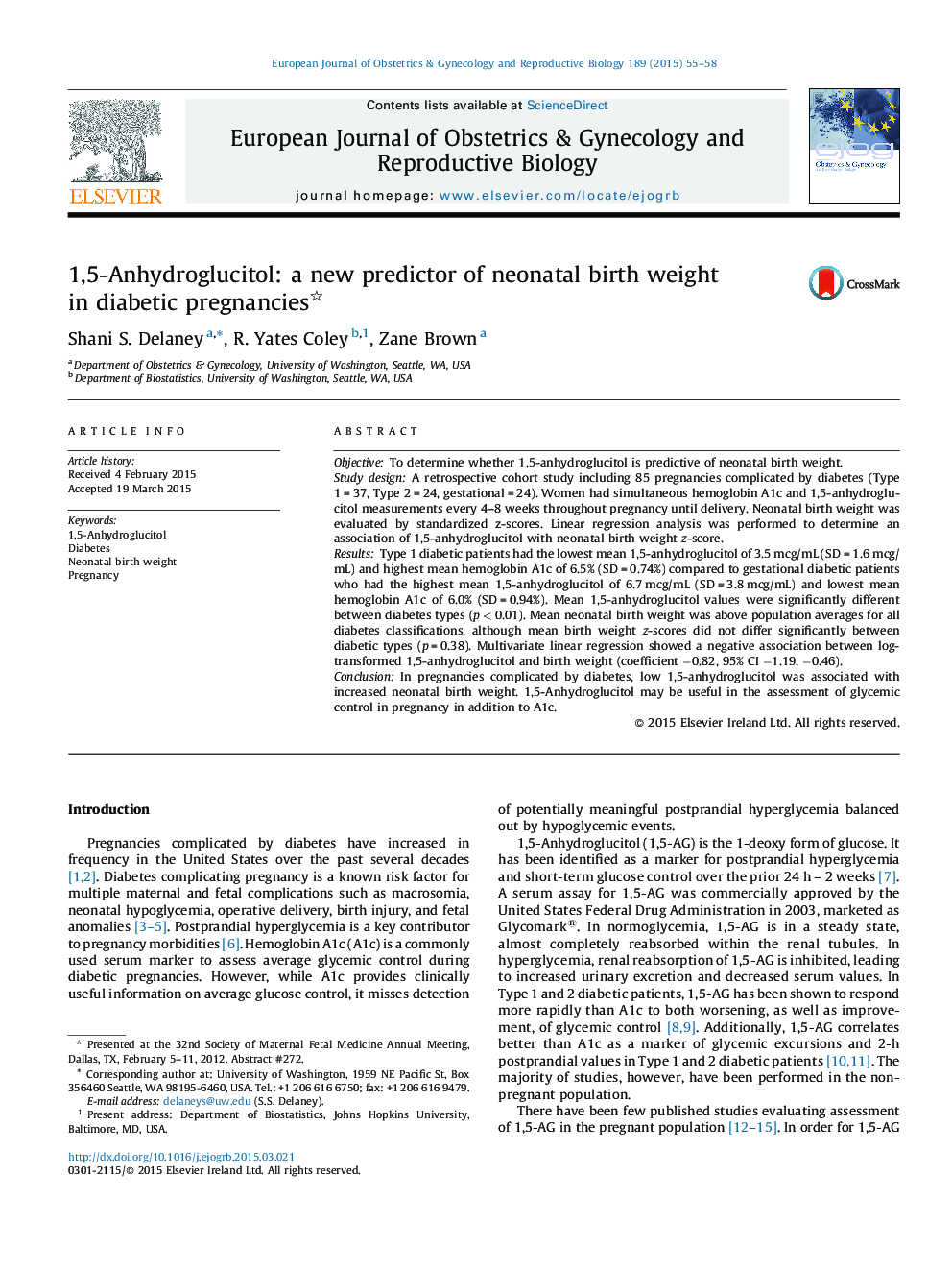| کد مقاله | کد نشریه | سال انتشار | مقاله انگلیسی | نسخه تمام متن |
|---|---|---|---|---|
| 3919628 | 1599792 | 2015 | 4 صفحه PDF | دانلود رایگان |

ObjectiveTo determine whether 1,5-anhydroglucitol is predictive of neonatal birth weight.Study designA retrospective cohort study including 85 pregnancies complicated by diabetes (Type 1 = 37, Type 2 = 24, gestational = 24). Women had simultaneous hemoglobin A1c and 1,5-anhydroglucitol measurements every 4–8 weeks throughout pregnancy until delivery. Neonatal birth weight was evaluated by standardized z-scores. Linear regression analysis was performed to determine an association of 1,5-anhydroglucitol with neonatal birth weight z-score.ResultsType 1 diabetic patients had the lowest mean 1,5-anhydroglucitol of 3.5 mcg/mL (SD = 1.6 mcg/mL) and highest mean hemoglobin A1c of 6.5% (SD = 0.74%) compared to gestational diabetic patients who had the highest mean 1,5-anhydroglucitol of 6.7 mcg/mL (SD = 3.8 mcg/mL) and lowest mean hemoglobin A1c of 6.0% (SD = 0.94%). Mean 1,5-anhydroglucitol values were significantly different between diabetes types (p < 0.01). Mean neonatal birth weight was above population averages for all diabetes classifications, although mean birth weight z-scores did not differ significantly between diabetic types (p = 0.38). Multivariate linear regression showed a negative association between log-transformed 1,5-anhydroglucitol and birth weight (coefficient −0.82, 95% CI −1.19, −0.46).ConclusionIn pregnancies complicated by diabetes, low 1,5-anhydroglucitol was associated with increased neonatal birth weight. 1,5-Anhydroglucitol may be useful in the assessment of glycemic control in pregnancy in addition to A1c.
Journal: European Journal of Obstetrics & Gynecology and Reproductive Biology - Volume 189, June 2015, Pages 55–58